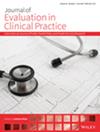The Manchester Triage System in the Paediatric Emergency Department—Accuracy of the Nonspecific Presentational Flow Charts
Abstract
Introduction
In emergency medicine, validated triage systems, such as the Manchester Triage System (MTS), have been established to ensure proper prioritization of patients. In adult patients, using nonspecific flow charts has been shown to be less accurate. In this study, the accuracy of nonspecific paediatric flow charts compared to the more specific flow charts is systematically examined for the first time.
Methods
Retrospective cohort analysis of 28,128 paediatric emergency patients being triaged between November 2021 and April 2023.
Results
During the observation period, the nonspecific presentational flow charts ‘unwell newborn/baby/child’, ‘crying baby’ and ‘irritable child’ were used 2695 times. The equally nonspecific flow chart ‘worried parent’ was used 5133 times. Patients triaged with nonspecific paediatric flow charts were often classified in lower triage levels. The AUC for the nonspecific flow charts and hospitalization in general was 0.604 [0.584–0.624] and the nonspecific chart ‘worried parent’ showed a lower AUC 0.594 [0.578–0.61]. The AUC of patients triaged with the more specific flow charts was 0.661 [0.654–0.669]. The AUC for the MTS nonspecific paediatric flow charts and admission to the ICU was 0.865 [0.752–0.978] and 0.782 [0.55–1] for patients triaged with worried parent as well as 0.771 [0.728–0.814] for patients triaged with more specific flow charts.
Discussion
This study is the first to examine the nonspecific paediatric flow charts. Compared to the specific flow charts, the performance of the nonspecific ones shows a significantly worse AUC for admission to the normal ward as a surrogate parameter for accuracy. Since nonspecific paediatric flow charts have many indicator questions at the indicator level that are aimed at nonspecific symptoms compared to the adult range, the poorer performance can be explained by a lack of compliance on the part of the nurse making the initial assessment.

 求助内容:
求助内容: 应助结果提醒方式:
应助结果提醒方式:


